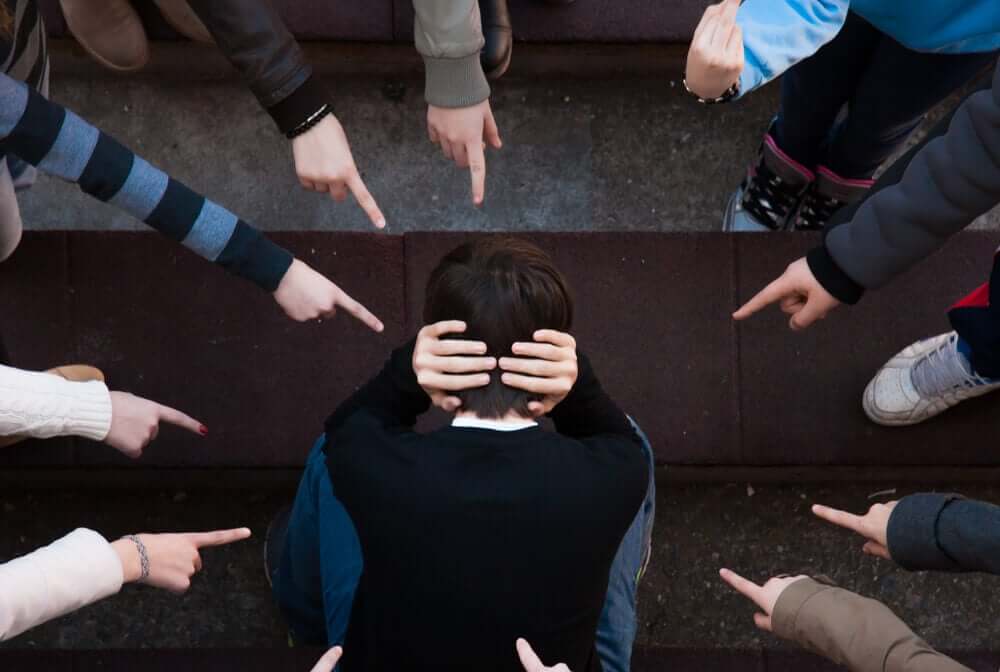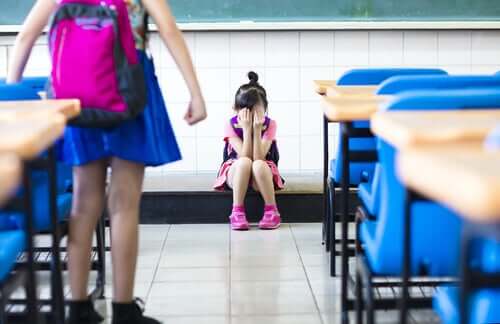Levels of Bullying Intervention

Nowadays, it’s important for schools to have levels of bullying intervention. However, this isn’t just for teachers. In fact, in order to work, you need to follow some strategies that include everyone related to the student.
“Overcoming abuse doesn’t just happen. It takes positive steps everyday. Let today be the day you start to move forward.”
– Assunta Harris –
Bullying intervention
To prevent bullying, keep in mind that it should be a comprehensive approach. Also, if possible, the prevention intervention should include:
- Victims
- Aggressors
- Witnesses
- Teachers
- Family
- Other members of the educational community

In fact, there are different levels of bullying intervention.
Levels of bullying intervention
School
School is one of the most important levels of bullying intervention because schools must be inclusive. Also, at school, kids should have a positive experience. There, they should be able to grow socially and emotionally.
In addition, the school needs to make sure that there’s security everywhere (the hallways, cafeteria, etc.). To prevent bullying at school, teachers need to be informed on the following topics:
- What bullying is
- How to detect bullying
- How to intervene and deal with cases of bullying
Families
It’s also important for schools and families to communicate. Also, they need to put their effort into creating a culture of collaboration among their kids. Therefore, parents are involved in school-related issues:
- Participating in school activities
- Being part of the Parent Teacher Association (PTA)
- Attending meetings and conferences
- Answering questions from the school
- Reading the brochures the school says are appropriate
- Collaborating with innovation, improvement programs, etc.
Students
On the other hand, there are steps that can happen in the classroom with the students. These should focus on:
- Creating positive relationships among students
- Developing a good climate in the classroom
- Using inclusive teaching strategies
In this sense, you can talk about this as a class. This way, you can teach them social-emotional skills. Also, you can have an individual bullying intervention when you know someone is being bullied.
At this point, you’d need to talk to all students involved. Whether they’re victims, bullies or witnesses, you need to respond based on the situation. Also, you need to follow the school’s protocol.

Conclusion for levels of bullying intervention
Lastly, all of these steps at different levels of intervention impact kids. Also, if you intervene correctly, you can see a change in students’ values. In addition, you’ll notice better behavior.
Therefore, children have to learn respect, empathize and live with all kinds of people. In addition, it’s important for them to also understand that they shouldn’t be silent when people are in trouble. Of course, they also shouldn’t hurt others.
Finally, the sooner kids are aware of the problem, the less likely they are to bully others. Also, kids need to start learning about bullying as soon as they start school.
Nowadays, it’s important for schools to have levels of bullying intervention. However, this isn’t just for teachers. In fact, in order to work, you need to follow some strategies that include everyone related to the student.
“Overcoming abuse doesn’t just happen. It takes positive steps everyday. Let today be the day you start to move forward.”
– Assunta Harris –
Bullying intervention
To prevent bullying, keep in mind that it should be a comprehensive approach. Also, if possible, the prevention intervention should include:
- Victims
- Aggressors
- Witnesses
- Teachers
- Family
- Other members of the educational community

In fact, there are different levels of bullying intervention.
Levels of bullying intervention
School
School is one of the most important levels of bullying intervention because schools must be inclusive. Also, at school, kids should have a positive experience. There, they should be able to grow socially and emotionally.
In addition, the school needs to make sure that there’s security everywhere (the hallways, cafeteria, etc.). To prevent bullying at school, teachers need to be informed on the following topics:
- What bullying is
- How to detect bullying
- How to intervene and deal with cases of bullying
Families
It’s also important for schools and families to communicate. Also, they need to put their effort into creating a culture of collaboration among their kids. Therefore, parents are involved in school-related issues:
- Participating in school activities
- Being part of the Parent Teacher Association (PTA)
- Attending meetings and conferences
- Answering questions from the school
- Reading the brochures the school says are appropriate
- Collaborating with innovation, improvement programs, etc.
Students
On the other hand, there are steps that can happen in the classroom with the students. These should focus on:
- Creating positive relationships among students
- Developing a good climate in the classroom
- Using inclusive teaching strategies
In this sense, you can talk about this as a class. This way, you can teach them social-emotional skills. Also, you can have an individual bullying intervention when you know someone is being bullied.
At this point, you’d need to talk to all students involved. Whether they’re victims, bullies or witnesses, you need to respond based on the situation. Also, you need to follow the school’s protocol.

Conclusion for levels of bullying intervention
Lastly, all of these steps at different levels of intervention impact kids. Also, if you intervene correctly, you can see a change in students’ values. In addition, you’ll notice better behavior.
Therefore, children have to learn respect, empathize and live with all kinds of people. In addition, it’s important for them to also understand that they shouldn’t be silent when people are in trouble. Of course, they also shouldn’t hurt others.
Finally, the sooner kids are aware of the problem, the less likely they are to bully others. Also, kids need to start learning about bullying as soon as they start school.
All cited sources were thoroughly reviewed by our team to ensure their quality, reliability, currency, and validity. The bibliography of this article was considered reliable and of academic or scientific accuracy.
- Booth, T. y Ainscow, M. (2015). Guía para la educación inclusiva: desarrollando el aprendizaje y la participación en los centros escolares. Madrid: OEI.
- Galende, I. (2017). Intervención en resiliencia en centros educativos: el currículo socioemocional en la formación del adolescente. [diapositivas de PowerPoint].
- Garaigordobil, M. (2011). El maltrato entre iguales: definición, prevalencia, consecuencias, identificación e intervención. San Sebastián: Universidad del País Vasco.
This text is provided for informational purposes only and does not replace consultation with a professional. If in doubt, consult your specialist.








